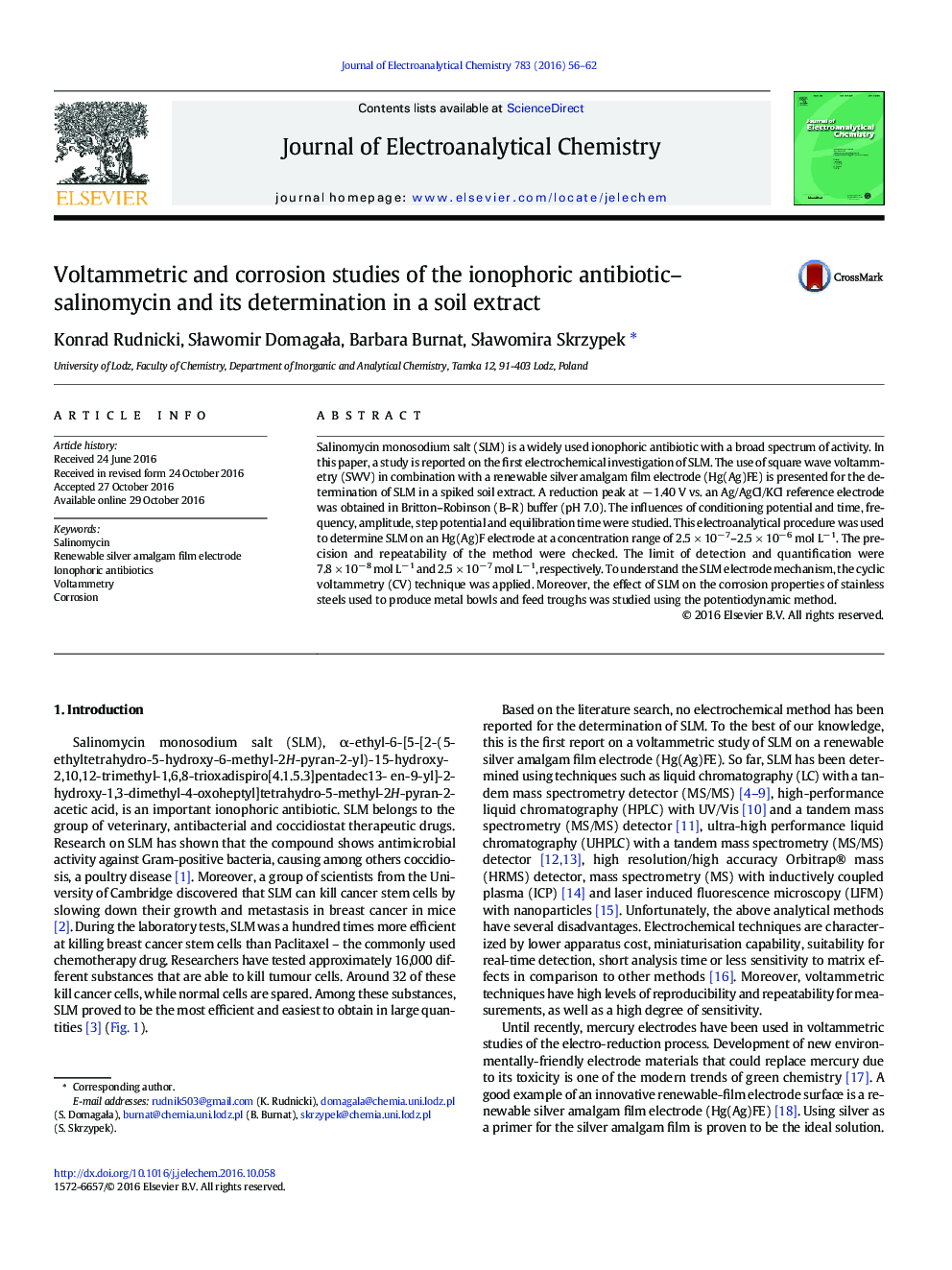| Article ID | Journal | Published Year | Pages | File Type |
|---|---|---|---|---|
| 6477056 | Journal of Electroanalytical Chemistry | 2016 | 7 Pages |
â¢A sensitive voltammetric procedure for the determination of SLM was developed.â¢The procedure was successfully applied to detect SLM in spiked soil extract.â¢The linear range, detection and quantification limits of SLM were determined.â¢Corrosion properties of SLM were studied.
Salinomycin monosodium salt (SLM) is a widely used ionophoric antibiotic with a broad spectrum of activity. In this paper, a study is reported on the first electrochemical investigation of SLM. The use of square wave voltammetry (SWV) in combination with a renewable silver amalgam film electrode (Hg(Ag)FE) is presented for the determination of SLM in a spiked soil extract. A reduction peak at â 1.40 V vs. an Ag/AgCl/KCl reference electrode was obtained in Britton-Robinson (B-R) buffer (pH 7.0). The influences of conditioning potential and time, frequency, amplitude, step potential and equilibration time were studied. This electroanalytical procedure was used to determine SLM on an Hg(Ag)F electrode at a concentration range of 2.5 Ã 10â 7-2.5 Ã 10â 6 mol Lâ 1. The precision and repeatability of the method were checked. The limit of detection and quantification were 7.8 Ã 10â 8 mol Lâ 1 and 2.5 Ã 10â 7 mol Lâ 1, respectively. To understand the SLM electrode mechanism, the cyclic voltammetry (CV) technique was applied. Moreover, the effect of SLM on the corrosion properties of stainless steels used to produce metal bowls and feed troughs was studied using the potentiodynamic method.
